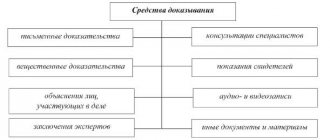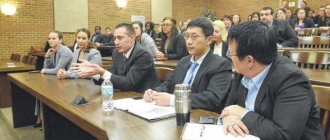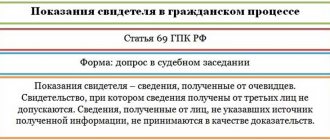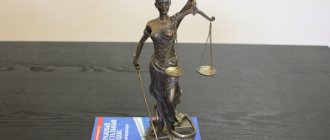Falsification of evidence in civil proceedings is a criminal offense and is prosecuted under Art. 303 of the Criminal Code of the Russian Federation. Dear readers! To solve your specific problem, call the hotline or visit the website. It's free. 8 (800) 350-31-84
Citizens protecting their own interests in court is a common way to prove the legitimacy of their position. Every year, courts consider more than 10 million such cases. But often in civil proceedings, individuals resort to illegal means to prove their position in order to obtain a favorable court decision.
Types of falsified evidence in a civil case
In civil cases, there are two types of falsification of documents:
- The first type is changing some data.
This type includes forgery of signatures and seals. This type also requires additional printing of some paragraphs or changing the meaning of the text. For example, when providing a certificate from the hospital, it contained incorrect information about the disease. Or, during testimony, the witness specifically changed some data so that the defendant avoids punishment. - The second type is distortion of all data.
This includes substitution of part or all of the evidence. For example, an attacker can write the text of documents with evidence on his own, inventing data or taking information from unverified sources in order to protect the criminal from punishment. This type of falsification also involves planting completely new evidence at the crime scene, which includes biomaterial, a weapon, and traces of shoes or a vehicle.
All these actions slow down the judicial process. Attention shifts from the main criminal to finding the right information.
If falsification is established, the evidence loses its force, which entails:
- resuming the collection of new evidence;
- making a decision based on the evidence that already exists, without searching for new ones.
Marks made without malicious intent or through carelessness are not falsification of evidence.
Main signs of document falsification
Crimes related to falsification of documents are characterized by four characteristics:
- Production of false government documents to obtain rights (advantages, benefits) or exemption from them.
- Forgery involves changing the data (information) specified in the original document by making corrections or in another way.
- Sales is the sale of deliberately forged documents. Please note that if the recipient is misled about the authenticity of the document, then the actions of the criminal will be classified under two articles: falsification of documents and fraud.
- Use of knowingly forged documents.
The main characteristic of the crime is the use of a forged document or the intention to do so.
If a citizen falsifies documents not for the purpose of obtaining benefits (rights, benefits) or exemption from them, then his actions will not constitute a crime.
How is falsification detected and proven?
Everyone involved in the investigation of a crime must verify the authenticity of the evidence and the accuracy of the information entered in the documents. The specialist should pay special attention to the following points:
- Inconsistency of information.
This is clarified by interviewing witnesses and further comparing the information received with that which was previously included in the documents. - Clear signs of falsification.
They can be noticed, for example, in a passport in the form of abrasions on the date or place of registration. Or in a document where a worn or leaking seal is found, as well as obvious signs of reprinting of the text. - Forgery of handwriting.
If a specialist has questions on this issue, he should conduct a comparative analysis of the handwriting of the signature from the received document with other examples.
A person participating in the investigation, in case of doubt, may resort to the services of an expert group to obtain complete information about the evidence. For example, specialists will help you compare handwriting, since without their knowledge and equipment it will be difficult in some cases.
How to write a term paper on speech therapy
07.09.2010 262627
These guidelines are compiled to help students gain an understanding of the content and structure of coursework in speech therapy.
Logopedia of pedagogical science that studies anomalies of speech development with normal hearing, explores the manifestations, nature and mechanisms of speech disorders, develops the scientific basis for overcoming and preventing them means of special training and education.
The subject of speech therapy as a science is speech disorders and the process of training and education of persons with speech disorders.
The object of study is a person suffering from a speech disorder.
The main task of speech therapy as a science is the study, prevention and elimination of various types of speech disorders.
Coursework in speech therapy is a student's scientific and experimental research. This type of educational activity, provided for by the educational and professional program and curriculum, contributes to the acquisition of skills in working with literature, analyzing and summarizing literary sources in order to determine the range of insufficiently studied problems, determining the content and methods of experimental research, processing skills and qualitative analysis of the results obtained. The need to complete coursework in speech therapy is due to the updating of knowledge concerning the content, organization, principles, methods and techniques of speech therapy work.
As a rule, during their studies, students must write two term papers - theoretical and practical.
The first course work should be devoted to the analysis and synthesis of general and specialized literature on the chosen topic. Based on this analysis, it is necessary to justify and develop a method of ascertaining (diagnostic) experiment.
In the second course work, it is necessary to provide an analysis of the results obtained during the ascertaining experiment, as well as determine the directions and content of speech therapy work, and select adequate methods and techniques of correction.
So, let’s present the general requirements for the content and design of coursework in speech therapy.
The initial and most important stage of working on a course project is the choice of a topic, which is either proposed by the supervisor or chosen by the student independently from a list of topics that are consistent with the areas of scientific research of the department.
Each topic can be modified, considered in different aspects, but taking into account a theoretical and practical approach. Having chosen a topic, the student needs to think through in detail its specific content, areas of work, practical material, etc., which should be reflected both in the formulation of the topic and in the further construction of the study. It should be recalled that the chosen topic may not only have a purely theoretical orientation, for example: “Dysarthria. Characteristics of the defect”, “Classification of dysgraphia”, but also take into account the practical significance of the problem under consideration, for example: “Speech therapy work on speech correction for dysarthria”. It should also be taken into account that when formulating a topic, excessive detail should be avoided, for example: “Formation of prosodic components of speech in preschoolers of the sixth year of life attending a preschool institution for children with severe speech impairments.”
The course work includes such mandatory parts as: introduction, three chapters, conclusion, bibliography and appendix.
The text of the term paper begins with the title page . An example of its design can be seen here.
Then the content of the work is given, in which the names of chapters, paragraphs, and sections are formulated in strict accordance with the content of the thesis. An example of its design can be seen here.
In the text, each subsequent chapter and paragraph begins on a new page. At the end of each chapter, the materials are summarized and conclusions are formulated.
The introduction reveals the relevance of the problem under consideration in general and the topic being studied in particular; the problem, subject, object, and purpose of the study are defined. In accordance with the goal and hypothesis, objectives and a set of research methods aimed at achieving the objectives must be defined.
The relevance of the topic lies in reflecting the current level of pedagogical science and practice, meeting the requirements of novelty and usefulness.
When defining the research problem, it is important to indicate what practical tasks it will help to implement in training and educating people with speech pathology.
The object of research is understood as certain aspects of pedagogical reality, perceived through a system of theoretical and practical knowledge. The ultimate goal of any research is to improve this object.
The subject of research is some part, property, element of an object, i.e. the subject of research always indicates a specific aspect of the object that is to be studied and about which the researcher wants to gain new knowledge. An object is a part of an object.
You can give an example of the formulation of the object, subject and problem of research:
– The object of the study is the speech activity of preschool children with phonetic-phonemic speech disorders.
– The subject of the study is the features of intonation speech of children with phonetic-phonemic speech disorders.
– The research problem is to determine effective directions for speech therapy work on the formation of intonation expressiveness of speech in the system of correctional intervention.
The purpose of the study contributes to the specification of the object being studied. The goal of any research is to solve a specific problem. The goal is specified in tasks taking into account the subject of research.
The research objectives are formulated in a certain sequence, which determines the logic of the research. The research objectives are set on the basis of a theoretical analysis of the problem and an assessment of the state of its solution in practice.
The first chapter is an analysis of literary sources, which examines the state of this problem in historical and modern aspects, and presents the most important theoretical principles that formed the basis of the study.
When writing the first chapter, you should pay attention to the fact that the text of the course work must be written in a scientific style. When presenting scientific material, it is necessary to comply with the following requirements:
– Specificity – a review of only those sources that are necessary to disclose only a given topic or solve only a given problem;
– Clarity – which is characterized by semantic coherence and integrity of individual parts of the text;
– Logicality – which provides for a certain structure of presentation of the material;
– Reasoning – evidence of thoughts (why this and not otherwise);
– Precision of wording, excluding ambiguous interpretation of the authors’ statements.
A literary review of the state of the problem being studied should not be reduced to a consistent presentation of literary sources. It should present a generalized description of the literature: highlight the main directions (currents, concepts, points of view), analyze in detail and evaluate the most fundamental works of representatives of these directions.
When writing a work, the student must correctly use literary materials, make references to the authors and sources from which the results of scientific research are borrowed. Failure to provide required references will reduce your coursework grade.
As a rule, in coursework on speech therapy, references to literary sources are formatted as follows: the number of the cited source in the general list of references is placed in square brackets. For example: General speech underdevelopment is a speech pathology in which there is a persistent lag in the formation of all components of the language system: phonetics, vocabulary and grammar [17].
When using quotations, in square brackets, in addition to indicating the source number, the page number from which this excerpt is taken is indicated, for example: Speech rhythm is based on a physiological and intellectual basis, since, firstly, it is directly related to the rhythm of breathing. Secondly, being an element that performs a communicative function, “correlates with meaning, i.e. controlled intellectually” [23, P.40].
However, course work should not be of a purely abstract nature, so you should not abuse the unreasonable abundance of citations. Quoting should be logically justified, convincing and used only when really necessary.
In the second chapter , devoted to experimental research, the organization should be described and the program of the ascertaining experiment should be presented. The survey methodology, as a rule, consists of a description of several series of tasks, with detailed instructions, visual and lexical material, the procedure for completing tasks by experiment participants, and scoring criteria. This chapter also provides a qualitative and quantitative analysis of the results obtained.
When analyzing the results of an experiment, it is necessary to use a scoring system. Examples of various criteria for quantitative and qualitative assessment are presented in the following works:
– Glukhov V.P. Formation of coherent speech in preschool children with general speech underdevelopment. - M.: Arkti, 2002. - 144 p.
– Fotekova T.A. Test methodology for diagnosing oral speech of primary schoolchildren. - M.: Arkti, 2000. - 56 p.
– Levchenko I.Yu. Pathopsychology: Theory and practice. - M.: Academy, 2000. - 232 p.
In order to visually present the results obtained during the experimental study, it is recommended to use tables, graphs, diagrams, etc. Histograms can be used in a variety of ways - columnar, cylindrical, planar, volumetric, etc. An example of the design of tables, figures, and histograms can be found here.
The third chapter provides a rationale for the proposed methods and techniques and reveals the content of the main stages of correctional work.
The conclusion contains a summary of the material presented and the main conclusions formulated by the author.
The bibliography must contain at least 25 sources. The list includes bibliographic information about the sources used in preparing the work. An example of its design can be seen here.
In the application you can present bulky tables or illustrations, examination protocols, observation records, products of activity (drawings, written works of children), notes from speech therapy classes, etc.
The volume of one course work must be at least 30 pages of typewritten text.
In general, coursework in speech therapy is the basis for a future thesis, in which the study of the begun problem can be continued, but from the standpoint of a different approach or a comparative analysis of the disorders being studied in different age categories of people with different types of speech disorders.
The content and format of theses in speech therapy can be found here.
Literature:
1. How to write a term paper on speech therapy: Methodological recommendations. Educational and methodological manual / Comp. Artemova E.E., Tishina L.A. / Ed. Orlova O.S. – M.: MGOPU, 2008. – 35 p.
2. Research work of students in the system of higher professional pedagogical education (specialty 031800 - Speech therapy). Methodological recommendations for completing the thesis / Compiled by. L.V. Lopatina, V.I. Lipakova, G.G. Golubeva. - St. Petersburg: Publishing house of the Russian State Pedagogical University named after. A. I. Herzen, 2002. - 140 p.
Responsibility and punishment for falsifying evidence
After a thorough investigation (if facts of falsification of evidence have been established), an investigation follows to establish the criminal person and motives.
When studying the legal side of the issue, keep in mind that the motive of the act does not matter. It also does not matter whether the judge accepted the forged documents or ignored them. The main thing remains the fact of falsification.
Often, document forgery is carried out by persons who have unlimited access to them. They are the ones who know all the ways to falsify information in order to achieve the desired result. Such actions can be provoked by various motives, among which are often:
- big bribes;
- the defendant’s desire to divert suspicion to another person;
- deliberately delaying the proceedings.
A person or group of persons involved in tampering with evidence is subject to one of the following penalties:
- Fine.
Often, for falsifying evidence, especially if the actions of the criminal were aimed at a citizen not involved in the crime, a penalty will be applied in the form of an administrative fine from 100,000 to 300,000 rubles. The amount of payments is calculated for each person individually, based on his earnings over a couple of years. - Forced labor.
A person accused of tampering with evidence may be sentenced to mandatory community service, the duration of which is 480 hours. - Detention.
Usually the accused is imprisoned for three years. However, at the discretion of the judge, the period can be extended to five years.
If imprisonment is imposed on a civil servant, then in addition to the term he is deprived of his position and prohibited from further practicing.
The terms are the same as for imprisonment - from three to five years. Punishment for falsification of evidence is not provided for those persons who provided incorrect data, but knew nothing about the forgery and considered the document to be genuine.
Punishments for falsification are prescribed in the “Criminal Code of the Russian Federation” in Article 303, part No. 1.
Summary
Tampering with evidence is the deliberate distortion of important data or falsification of official documents that are considered in court. If the incident is discovered during civil hearings, the perpetrator will be held accountable under Part 1 of Art. 303 of the Criminal Code of the Russian Federation. He expects from 100 thousand rubles. fine before arrest for 4 months.
As practice shows, establishing the fact of falsification is a complex matter that will take a lot of your time and effort. Often, investigators fail to identify the perpetrator of the forgery and bring him to the deserved punishment. In the meantime, while the proceedings are ongoing, your property may already be resold several times. Therefore, if you suspect that your opponent is feeding the court false papers, we recommend that you immediately seek help from an experienced lawyer. A specialist will analyze the situation and suggest the correct course of action.f
Allegation of falsification of evidence
If evidence has been tampered with, file a statement. There are two ways to submit this document:
- Submitting an application during the process.
A person can submit such a document in a courtroom. It is drawn up in writing before the hearing (however, the court also allows an oral statement). The document must indicate that the applicant requires the involvement of an expert group to investigate the falsification. Remember that such services are paid, that is, the applicant himself pays for the work of the experts. If falsification of evidence is established, the money can be returned. It is also worth remembering that the statement must be included in the protocol. - File a complaint with the police.
The paper is taken to the station, which is located in the area where the court hearing the case is located. This method can be used only if the court has not found falsification, and the applicant is firmly convinced of the opposite.
Who can apply and when?
Any person participating in the trial who suspects falsification can submit an application.
As mentioned above, a crime can be reported at a hearing. If the falsification is discovered after the judge’s decision in the case under consideration, the application can be sent to the court. But proving a fake is problematic. It is better to submit a petition as early as possible in order to quickly convict the criminal and not delay the process.
How to make an application correctly?
Take your application seriously and include all the necessary information to avoid denial of consideration. The paper is filled out as follows:
- The first stage is to create the “header” of the document.
As a standard, information is written in the upper right corner. The first line indicates the institution where the application is sent (court or police station). Next, on the second line, standard information about the applicant is entered: last name, first name, patronymic and place of residence. The third line indicates the number of the case under consideration, in which forgery is suspected, and the full names of the defendant and plaintiff. - Stage two – description of the facts of the crime.
Next, briefly but succinctly state the facts of the offense, namely write what evidence is falsified. It is better to refer to the legislative framework regarding false evidence. - Stage three – conclusion.
It contains a request for the recognition and exclusion of falsified evidence. - Stage four – applications.
This includes a list of documentation attached to the application, if any. - Stage five – signature and date.
At the end of the form, the date of compilation of the paper and the signature of the applicant are indicated.
If the application is sent to the court, two copies will be required. The first copy is sent to the judge. As for the second copy, the court office stamps it and returns it to the applicant.
sample application for falsification of evidence in .doc format (Word)
Procedure for consideration of the application
Within ten days after filing the application, the court appoints an examination. It can be either handwriting or forensic technical. The choice depends on the type of forgery. If the crime was discovered and confirmed, then the falsified evidence will be removed from the case.
Legislative acts
According to the law, falsification of documents combines a number of criminal acts, the essence of which is the forgery of official papers or any other types of physical media. According to the Criminal Code (CC) of Russia, this crime falls under several articles. The main ones are:
- Article 327 of the Criminal Code of Russia on the forgery, production or sale of illegal documents, including awards and award documents, stamps, forms and seals;
- Article 187 of the Criminal Code of Russia on the production or sale of payment documentation and bank cards;
- Article 186 of the Criminal Code of Russia on the manufacture or sale of counterfeit securities and money;
- Article 233 of the Criminal Code of Russia on the forgery of prescription forms or other documents allowing one to receive or purchase narcotic or drug-containing drugs and psychotropic drugs;
- Article 303 of the Russian Criminal Code on falsification of evidence;
- Article 142 of the Russian Criminal Code on forgery of documents during election campaigns and referendums;
- Article 292 of the Russian Criminal Code on official forgery.
As stated above, these are only the main articles regulating liability for falsification of documents. Depending on the crime, a court decision can be made on the basis of more than 20 articles of the Criminal Code of Russia.
In some cases, falsification of documents is the main means to achieve criminal goals, while in others it is only a secondary feature. However, there is a common circumstance that unites all these crimes - a forged document allows the criminal to obtain property or other types of rights or be released from any obligations.









